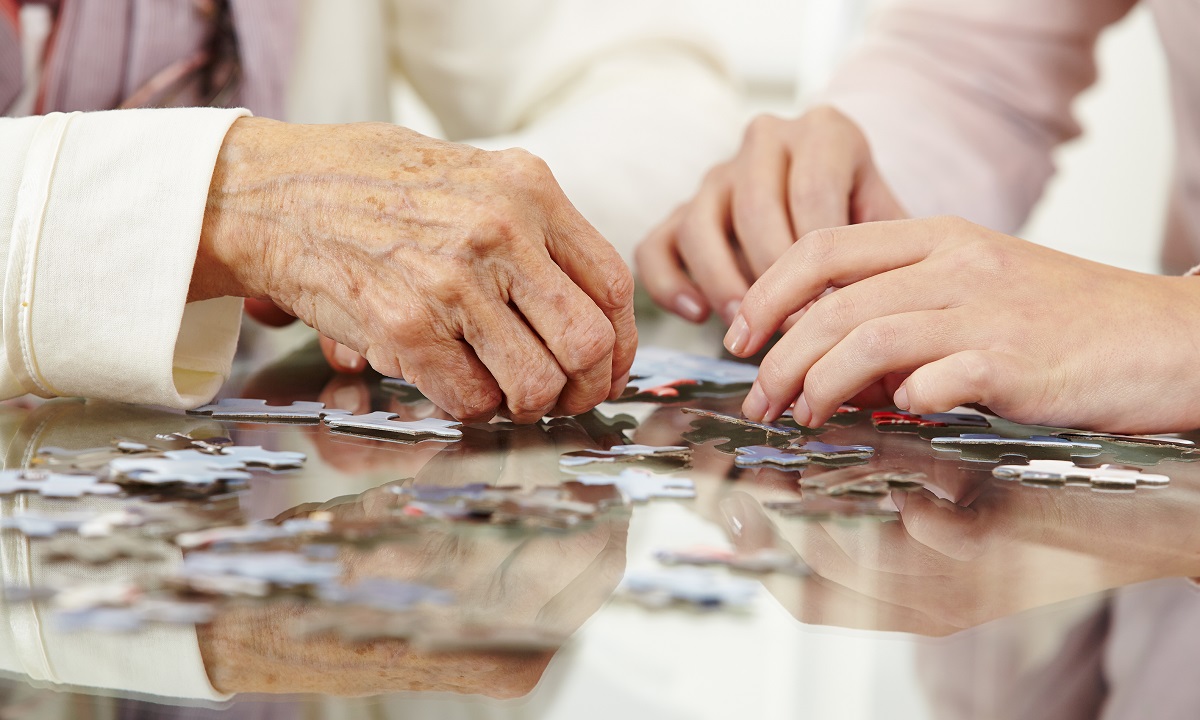Everyone is unique and each person’s experience of dementia is different, however there are some common features that span across all types of dementia, which reflect people’s emotional responses to having and living with dementia. Being diagnosed with dementia is life-changing, both for the person with dementia and their family. Diagnosis triggers a bewildering mix of emotions.
For some people, their first response to a positive diagnosis is shock and disbelief. They may mistrust the outcome of the diagnostic process and deny they have dementia, resolving to ‘carry on as normal’ despite the bad news. Others may feel immediately fearful and bleak about the future, experiencing periods of panic, sadness, and depression. For some, the diagnosis comes as a relief: acknowledging worrying signs that something was awry, they feel validated by putting a name to the condition that has been causing their symptoms.
Insight
Loss of self-awareness and lack of insight are symptoms that can occur early in someone’s dementia or much later. This is called anosognosia, derived from the Greek meaning “to not know a disease”. Anosognosia is caused by damage to the frontal lobes, interfering with a person’s ability to organise new information and revise their internal understanding of self-image. Without self-image updates, the person retains their old self-image from before the illness started. Since their perceptions feel accurate to them, they conclude that people around them – friends and family – are lying or misjudging situations. The more that close relatives persist in their belief that they are ‘right’, the more the person with dementia is challenged, often resulting in an emotional reaction such as frustration, anger or despair.
Language
People with dementia can experience language difficulties and struggle to communicate verbally. This is called aphasia and can take the form of expressive aphasia disrupting the person’s ability to talk, and/or receptive aphasia, affecting the person’s ability to receive, process and interpret what is heard. There are many ways in which a person shows signs of these difficulties, for example, using general terms *referring to something as ‘thing’) rather than specific nouns, pausing or hesitating to search for the right word, creating stock phrases to cover up for lack of understanding of what is being said.
One particular woman with young onset dementia who I supported over a period developed a range of ‘safe phrases’ to ease social discomfort. In company, when she couldn’t follow the details of what was being said (whilst still being able to gather the spirit of the conversation) would say “I think that’s absolutely right” and “yes, I see what you mean”. To anyone who didn’t know the extent of her dementia, she was participating in the discussion perfectly well.
Sensory
Disturbance of sensory perception is another symptomatic challenge that people with dementia can face. Visual perception and spatial awareness difficulties occur with damage to the occipital lobe in the brain. The occipital lobe is responsible for processing and interpreting visual cues received by our eyes. It’s important to understand that visual perception problems, which have multiple effects on a person’s abilities, are not caused by eyesight issues.
Difficulties people with dementia might experience include perceiving a picture or image as real, mistaking what they see for something else, struggling to recognise familiar faces.
I was talking recently to a family carer – a husband who looks after his wife – and he explained that he had bought his wife some paper napkins patterned with butterflies. He thought that she would like them as they were attractive and colourful, and she had always been fond of butterflies. To his disappointment, his wife (who speaks very little nowadays) wouldn’t touch the napkin he gave her. She became agitated and pushed it away and kept repeating the word ‘dirty’. He realised that she had perceived the butterflies to be real and crawling on the napkin. He then gave her a plain white napkin and she immediately calmed down.
My father was troubled by perception difficulties. He found unfamiliar environments difficult to comprehend. When I took him to hospital for a CT scan, he was very confused by the toilets and consulting room. On the last holiday that we went on, he became very agitated about an unexplained red glow on the ceiling of his bedroom in the middle of the night. He couldn’t make sense of it and concluded that it was a fire. Naturally, this caused him to raise the alarm. It took me a while to figure out what he was referring to as he exclaimed ‘there is a fire in the roof’. It was actually a reflection from a digital clock on his bedside table, but he couldn’t work that out and came up with his own very plausible (to him) explanation.
In their shoes
To understand how a person with dementia may be feeling, it helps if we can put ourselves in their shoes and imagine what it is like to see the world through their eyes. Emotions such as fear, frustration, anger, distress, panic and sadness are natural reactions to their experiences of their environment, social interactions and internal world. Focusing on what people can still do, their skills, talents, interests, helps to preserve a person’s sense of self worth and confidence.
These are difficult situations for families. Dementia does cause irreversible changes to a person’s cognition and capabilities, multiple losses and constantly changing relationships. It’s a big ask for family carers to treat their ‘loved ones’ with patience, respect and understanding: understandably, it isn’t always possible.
It was the psychologist Professor Tom Kitwood (1987) who first spoke about the concept of personhood for people with dementia. Essentially, he was saying that people with dementia are unique individuals with the same human qualities that we all possess and the same psychological needs, which he defined as comfort, identity, occupation, inclusion, attachment and love.
If you have questions arising from this article, please do get in touch: barbara@liftedcare.com
SHARE
Explore more




